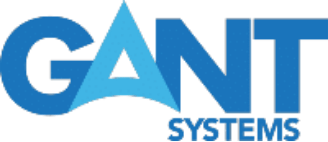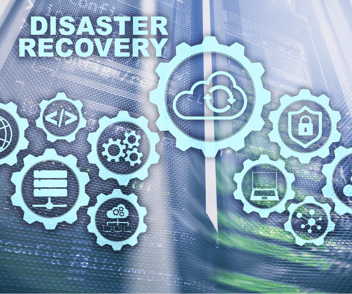How Will Hybrid Work Evolve in 2025? Understanding Your IT Needs
The world of work has changed dramatically over the past few years, and one of the most notable shifts has been the rise of hybrid work. Employees now have the flexibility to split their time between home and the office, a shift that offers both incredible opportunities and unique challenges. As we look ahead to 2025, hybrid work is expected to evolve further, and understanding the IT needs that come with this shift will be critical for businesses of all sizes.
For many small businesses, navigating the complexities of hybrid work while keeping systems running smoothly can feel overwhelming. From securing remote connections to ensuring seamless collaboration, IT infrastructure must be adapted to meet the demands of a hybrid workforce. Fortunately, with the right planning and support from an expert IT partner like Gant Systems, businesses can embrace the future of work with confidence.
The Hybrid Work Revolution: What's Next?
Before diving into the specific IT needs, let's take a moment to explore how hybrid work is expected to evolve in the coming years. In 2025, hybrid work will likely be even more ingrained in the fabric of daily business operations.
While the trend of working from home or remote locations won’t disappear, it's anticipated that hybrid work will become more structured. Employees may spend part of their week at the office for team collaboration and other in-person engagements, while the rest of their week will be spent working remotely. This will increase the demand for flexible, efficient, and secure IT solutions to ensure employees are productive, no matter where they are working.
Why IT Infrastructure is Crucial for Hybrid Work in 2025
To successfully adapt to this evolving hybrid work model, your business will need to ensure that your IT infrastructure is ready. It’s no longer enough to just have basic hardware and software solutions; you need a more robust, future-proof system that allows for seamless collaboration, efficient communication, and strong security, no matter where your employees are.
Here’s how you can begin preparing your business for 2025’s hybrid work landscape:
1. Enhanced Collaboration Tools
In a hybrid work environment, communication and collaboration are key. Your team needs access to real-time communication tools, shared workspaces, and cloud-based applications. In 2025, collaboration will go beyond traditional video calls and emails. It will involve immersive tools like virtual whiteboards, real-time document editing, and project management platforms.
Your IT needs:
- Invest in cloud-based collaboration tools like Microsoft Teams, Slack, or Google Workspace.
- Ensure that your network can handle increased bandwidth demands, especially during video conferences and file-sharing sessions.
- Consider integrating AI-powered solutions that streamline workflows and provide real-time insights for your teams.
2. Security Will Be a Top Priority
With employees accessing corporate networks from various locations and devices, security becomes an even more pressing concern. In 2025, hybrid work will continue to challenge businesses to keep data safe from a growing number of cyber threats. This means more sophisticated approaches to data protection, from secure communication channels to robust multi-factor authentication (MFA).
Your IT needs:
- A comprehensive cybersecurity strategy that includes network firewalls, secure access, and endpoint protection.
- Adoption of Zero Trust security models, where users and devices are continuously verified, regardless of their location.
- Encryption of sensitive business data, both at rest and in transit, to prevent data breaches and leaks.
3. Network and Connectivity Management
As your team continues to work across various locations, ensuring reliable and fast internet connections will be essential for maintaining productivity. In 2025, businesses will need to ensure their networks are designed to handle an increased volume of data and more complex traffic.
Your IT needs:
- High-performance, scalable network infrastructure to support cloud-based applications, file-sharing, and video conferencing.
- VPNs (Virtual Private Networks) to allow employees to connect securely to the corporate network from any location.
- A reliable IT support system that can quickly address connectivity issues, ensuring minimal disruption to remote workers.
4. The Move to Cloud Services
The cloud is already an essential part of hybrid work, and it will only become more so in 2025. From cloud storage to software as a service (SaaS) applications, businesses must adopt scalable cloud-based solutions that allow employees to access the tools and data they need from anywhere in the world. Hybrid work will demand even more flexibility, and the cloud is the perfect enabler.
Your IT needs:
- Transition to cloud infrastructure like AWS, Microsoft Azure, or Google Cloud to ensure access to resources from any device.
- Migrate legacy applications to the cloud to improve scalability and integration.
- Implement a backup and disaster recovery plan that leverages cloud storage for business continuity.
5. Device Management and Support
In a hybrid work environment, employees will use a variety of devices, from laptops and smartphones to desktops and tablets. This creates challenges for IT departments that need to ensure all devices are properly managed, secured, and supported. In 2025, the number of devices accessing corporate networks will only grow, so it’s important to have solutions in place that ensure seamless management and troubleshooting.
Your IT needs:
- Device management tools that allow you to monitor and secure all devices used by your employees.
- Mobile Device Management (MDM) solutions to remotely configure and enforce security policies on employee devices.
- An IT support system that can quickly resolve issues, whether it's a laptop malfunctioning or a software issue.
6. AI and Automation Will Take Center Stage
Artificial Intelligence (AI) and automation are changing the landscape of IT management, and they will play an even larger role in the hybrid work model of 2025. From predictive analytics that help prevent system downtime to automated workflows that streamline daily tasks, AI can take over many routine IT functions and improve efficiency.
Your IT needs:
- AI-driven solutions to proactively monitor and optimize system performance, identify potential issues, and resolve them before they impact employees.
- Automation tools that streamline IT processes, like software updates and patch management, reducing manual workload for your IT team.
- Integration of AI into collaboration tools to enhance productivity and decision-making.
Navigating IT Needs in the Evolving Hybrid Work Landscape
As hybrid work continues to evolve, businesses need to stay ahead of the curve to ensure they’re ready for the challenges of 2025 and beyond. The future of work will be driven by flexibility, scalability, and security—and understanding the IT needs that come with this shift is essential. Whether it’s investing in enhanced collaboration tools, strengthening security measures, or managing a diverse array of devices, your IT infrastructure must be prepared to handle the demands of a hybrid workforce.
At Gant Systems, we know that transitioning to and supporting a hybrid work model isn’t always easy. That’s why we’re here to help guide you through it. Our team of experts can work with you to assess your current IT setup, implement the right tools, and ensure your systems remain reliable and secure as your business grows and evolves.
By leveraging cloud-based solutions, advanced security protocols, and automation tools, you can ensure that your employees have the flexibility they need while keeping your business operations running smoothly. And with AI-driven solutions in the mix, IT management can become more proactive, identifying and solving issues before they affect your team.
Hybrid work may be here to stay, but with the right IT strategy and a trusted partner like Gant Systems, your business will be ready to thrive in 2025 and beyond. Let us help you simplify the complexities of managing a hybrid workforce, so you can focus on what matters most—growing your business.





